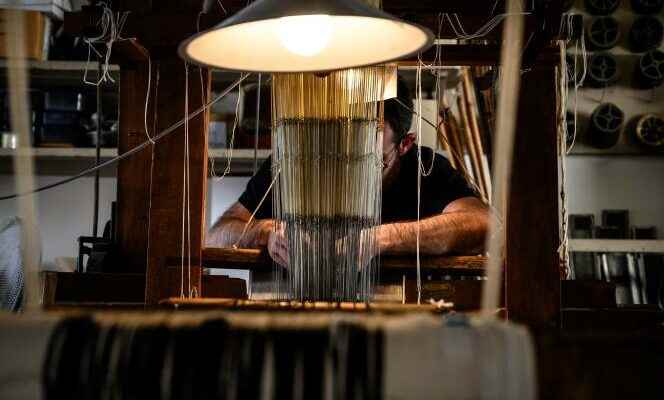Caring for babies, cultivating algae, polishing industrial objects, weaving tiny luminous threads… Historically innovative, the silk industry is reinventing itself in a spectacular way, in fields as different as agri-food, health, cosmetics or aeronautics. All thanks to recent chemical and biochemical research. Its entirely organic origin also gives it a powerful asset, at a time when organic and authentic marketing reigns supreme.
The veil of innovation was lifted during the “Silk in Lyon” show, which took place from November 17 to 20 in the capital of Gaul. In the middle of the traditional stands of the Palais de la Bourse, dripping with scarves, ties, stoles and other accessories with shimmering reflections, a few guests embodied the new horizons of silk.
This is the case, for example, of Cécile Labadie-Bousquet. This doctor in chemistry and biochemistry worked on fibroin, a component of silk thread. Reduced to powder, this protein reduces the fatty effects of vegetable oils. With her husband, the scientist created in 2016 in Avignon (Vaucluse), the Cerra laboratory, which manufactures and markets a range of cosmetic treatments. “Silk has a bit of an old-fashioned image, but it’s coming back into fashion. While working on our products, we were surprised to discover that the Asians had not invested in this area at all” testifies Raphaël Le Bruchec, commercial director of Cerra.
“Tendency to naturalness”
“We must not think that silk is limited to a fabric exhibited in the museum, it is a material of the future. In our time when energy sources are becoming a subject of concern, silk is used in the design of long-lasting products, in clothing and in other variations. More sustainable and less carbon-intensive products »confirms Xavier Lépingle, vice-president of Unitex, the inter-company textile union. “The trend towards naturalness is the future of tomorrow’s textiles”, says Mr. Lépingle, head of Unitex’s silk section. Currently, 75% of textile manufacturing comes from petrochemical materials, such as nylon, and 22% from cotton. The share of silk can only grow with the questioning of fossil fuels, anticipates the general manager of Hermès textile.
First textile region in France, Auvergne-Rhône-Alpes has 600 companies and 17,000 jobs related to silk
A centuries-old cocoon of silk manufacturing, the Lyon region remains the epicenter of these new developments, with 40 companies and 2,000 jobs in the silk sector. First textile region in France, Auvergne-Rhône-Alpes has 600 companies and 17,000 jobs related to silk, for 3.3 billion in turnover. The silk business generates 13.3 billion euros in turnover nationally, according to data from Unitex.
You have 57.94% of this article left to read. The following is for subscribers only.
